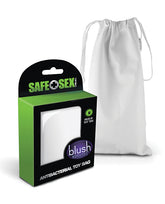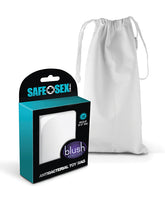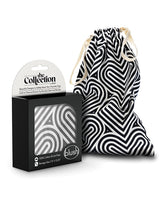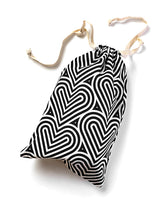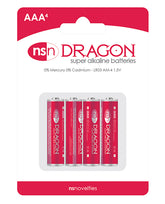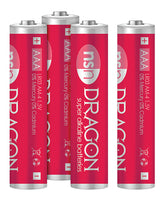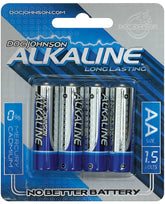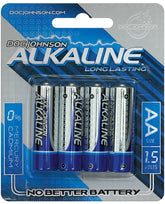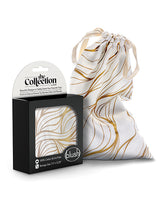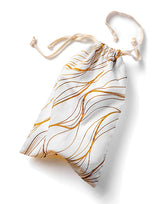Trending Now
Popular Products
- $11.99
-
- $11.99
- Unit price
- / per
- $17.99
-
- $17.99
- Unit price
- / per
- $3.99
-
- $3.99
- Unit price
- / per
- $7.99
-
- $7.99
- Unit price
- / per
- $17.99
-
- $17.99
- Unit price
- / per
Free shipping on orders $59+
BDSM Resources
Introduction
What Is My Role?
What exactly do these mean?
Negotiations & Limits
Safety is the number one concern for those involved in BDSM play. Every participant should discuss in detail (as part of negotiations) what activities each is and is not comfortable with before the scene begins. These terms are called limits and everyone has them, be they Dom or sub.
For example, you may not like being tickled, or it could register as painful. In this case, tickling would be considered a limit, a territory the play will not cross into. If you are not sure about an act, it should be treated as a limit until you have enough information to be decisive.
Safe Words
Safe words are also critical to BDSM play. These are a signal used to indicate quickly if the scene needs to stop or change. Most often, safe words are short simple terms which are unlikely to be used accidentally, such as “red,” “peach,” or “star”.
Supplies
In case a session goes wrong, keep the following near:
- Keys to any restraints used in the session. Also keep a spare in a safe spot!
- Scissors to cut apart any restraints or rope stuck under tension.
- First-Aid kit. If an injury does occur, be prepared to treat it.
Checking-In & Aftercare
Behavior during a session is as important as preparation beforehand. Checking-in is as simple as making sure the Dom and sub are in a good place. Make sure restraints are not cutting off circulation. Make sure impact play has not drawn blood. Many partners will make use of multiple safe words to make check-in smoother, opting to include a “yellow” before a “red” where play will pause and the participants can talk about what needs to change.
Aftercare refers to steps taken when a scene concludes. The precise practices involved for each participant should be discussed during negotiations, alongside limits. Everyone involved should know what comforts are needed after the session.
As part of aftercare, make sure everyone feels good about the scene. Ask questions to determine what needs to be different next time. These types of questions may feel awkward, but they are very important to ensure all have the best experience. All parties should care for each other physically as well as psychologically. Those involved in degradation play should be reassured of positivity, and those who received impact play should be given soothing lotions.
Aftercare
What is Aftercare?
Physical Aftercare
Psychological Aftercare
Misconceptions
“BDSM is abuse.”
“If I like rough sex, I’ll like BDSM.”
“BDSM is a mental illness.”
Limits and Pre-Talk
Contracts
In BDSM, a contract is a formal agreement between two parties that includes hard and soft limits, safe words, and aftercare specifics. While you might not want to go so far as to write up a formal printed agreement for your dynamic, it is important to discuss each of these topics, especially when you are first getting into BDSM. It is also highly encouraged to reiterate them before each time you play together. Discuss step by step what you want to happen in your scenes. Use this guide as a starting point for a verbal contract together.
You should also agree on what steps are going to be taken to ensure everyone is safe for the entire scene. This includes having a cell phone near by in case of emergency, and having things like safety scissors if you are going to be doing any bondage. Discussing any health concerns is also very important before any scene.
Unlike typical legal agreements, BDSM contracts can be renegotiated or even voided at any time. If any involved party is unhappy with it. Consent is a fundamental part of what keeps BDSM a safe practice. Just because you agreed to something last week, does not mean you have to do it right now; it is okay to change your mind last second or even during an activity. That is what safe words are for! It is absolutely okay to say “never mind’ or “I would like to stop”.
Scenes
What is a scene?
A scene is defined as any period of time that BDSM is practiced. It can be as short as a few minutes of light spanking, or as long as a few days of activities. Building a scene consists of a lot of planning and discussion.
As with all aspects of BDSM, scenes are supported by ongoing consent and trust. Topics like limits and safe words should be part of every scene planning. Respecting each other’s boundaries is just the first step. Make sure to be as honest as possible about what you do and do not want to happen. This will make sure no accidents happen that can lead to discomfort or worse.
Even though building a scene can seem tedious and time consuming, its main purpose is to outline what both parties want to happen so they get the best possible enjoyment out of it.
Not all scenes are going to be the same. Take your time planning each one to make it unique and engaging.
One thing that can be done to make scene planning more exciting is to turn it into sexy talk. Say things like “I want you to do __ to me” or “I want to do __ to you”. We also recommend writing things down so nothing is forgotten in the heat of the moment.
Also, remember to check in with your partner frequently before, during, and after a scene.
Set-Up
Setting: First, decide where you plan to have the scene. This should be a safe, private location. You should also pay attention to things like room temperature, as heat or cold can take away from the fun of a scene. Next, put props, safety tools, and aftercare tools in an easy to reach spot.
Props: Props are anything that is going to be used in a scene. This can include impact toys, restraints, sex toys, and anything else you want to play with in the scene. It can even include specific clothing items.
Planning: Outline what you want to happen in the scene. All scenes should start with a warm up, including stretching, a light snack, and water. It should also have a cool down period. Cool down can include things like light sensation play, massage, and release from restraints. Of course, drink some water at the end.
Creating a scene is a team effort and open communication is very important. Never go into a scene if you are unsure what you want to happen. It is very easy to end up disappointed or worse if you do. Keep in mind that scenes can be stopped by either partner at any time for any reason. Ongoing consent should be the foundation of every scene you create.
Safety Tools: This is possibly the most important part of any scene. Safety tools should always be easily accessible. This includes things like surgical scissors, keys for restraints, and a cell phone for emergencies. You should also keep a first aid kit near by. Never keep your safety tools in a locked of closed box during a scene. You should be able to grab them at a moment’s notice. Safety tools should be tailored to the scene, as not all safety tools work for every activity. For example, if you’re not using handcuffs, a key will not do you any good.
Aftercare Tools: Another important thing to have easily accessible is aftercare tools. This includes water and a light, healthy snack. It can also include things like blankets, pillows, or a stuffed animal. If there is any impact play planned in a scene, keep some soothing lotion nearby. Unscented is best so you do not add unwanted stimulation.
For more information about aftercare practices, check out our Aftercare section.
Restraints
Please read our BDSM Introduction and BDSM Aftercare sections before attempting restraint play.
Safety is the number one concern for any BDSM play. As such, everyone involved should discuss what they are and are not comfortable with before any fun is had.
As always, check in with your partner frequently. Keep an eye on where you have tied them up to make sure they do not lose circulation in their fingers or toes. Get them out of the restraints quickly if there is any discoloration (fingers and toes should not be purple).
Never leave someone tied up while they are alone or asleep.
If your sub uses their safe word, get them out of the restraints as quickly and calmly as possible.
Handcuffs
Possibly the most well known bondage toy people think of is furry handcuffs. Contrary to popular belief, these are not a good beginner tool. The “fur” they come with does not provide any padding between the metal and the wrists or ankles and they are often poorly made.
When you are just starting out, we recommend fabric & Velcro cuffs. They are safer, more comfortable, and you generally do not have to worry about them cutting off circulation. Plus, some of them have a D-ring and can hook to different things like headboards or tethers.
When you want something a little more advanced, look for fabric or leather cuffs that have a buckle like a belt. These are more sturdy and secure, but still more comfortable than metal cuffs. Plus, some of them have locks (make sure to keep a key in a safe place).
Other Tools & Toys
Rope is a little more advanced, as it can tighten on itself if you are not careful or experienced. When tying up someone’s wrists or ankles, make sure you can fit two fingers easily between the rope and the wrist. If you are interested in learning about rope play, there are tons of rope books out there! As a bonus, rope is so versatile, you can turn it into a flogger.
Silky sashes are another super versatile tool for tying someone up! With enough sashes you can make an under-the-bed restraint system. They can also double as a blindfold.
Under the bed restraint systems allow you to tie up your sub in multiple spots (generally four or six) and are great for people who do not have headboards to attach restraints to. Try tying your sub up by their wrists, ankles, thighs, arms, knees, or even hair.
A Little More Advanced
Ball gags and ring gags are a way of restraining speech or noises. When starting out, make sure to get a small, breathable ball gag (one with holes in it). Always make sure you have a nonverbal safe word if you are using a gag. We suggest having your sub hold a set of keys to drop if they want to stop the scene.
Bondage collars come in multiple styles. The basic is just a straight collar, often accompanied by a leash. Some are wider and are called “training” collars or “posture” collars. Training collars are used to “train” subs by keeping their head tilted up to make them more obedient or submissive.
Always make sure your sub can breathe comfortably and fully. Collars should NEVER be used to restrict breathing. They are strictly for ornament, or for gently leading your sub where you want them to go. If you are going to lead your sub with a leash or collar, never jerk the leash or collar as this can lead to whiplash and nerve damage.
Sensation Play
Tools & Toys
Blindfold: When one of your senses is dampened, others become the focus. Use a blindfold to make sensations unexpected and more intense
Floggers: When used in a repetitive, gentle sweeping motion it can make skin more sensitive.
Feather Ticklers: Can be used to tickle or sooth depending on preference. You can use to sooth between more intense sensations.
Clamps: The broader the clamp, the more gentle it will be. Remove if you notice any discoloration. When starting out, find a clamp with adjustable tension.
Suction: Nipple, clitoral, penile, or body. Remove if you notice discoloration or bruising (a little red or pink is normal)
Wartenberg wheels: Can be used lightly to tickle and with a little more force can be somewhat painful. The more wheels, the less intense the sensation. When starting out, look for a wheel with blunted tips. Never use with the intent to draw blood. If you do so on accident, stop play immediately and use a first-aid kit to avoid infection!
Wax: Do not use regular candles. There are special candles made specifically (frequently soy-based, so be aware of allergies) for wax play that melt at lower temperatures. Make sure to hold the candle away from the body (12" or more) to avoid serious burns. You can also start with a massage candle.
Ice: Use a simple ice cube as a sensory tool to tease your partner on a hot day. Make sure to keep the ice moving so it does not cause frostbite. Combine this with a blindfold to heighten the experience.
Electrostimulation (E-Stim): E-stim toys come in many different styles with many different target areas for stimulation. Most are made for external stimulation only, but there are a few meant to be used internally. As with any sensation play, start on the lower settings and work your way up to higher settings. Do not use if you are pregnant, have a history of heart conditions, wear a pacemaker, or have a copper IUD.
Neon wands and Tens units are great places to start when first experimenting with electrostimulation. With a neon wand, start with the larger attachments like the comb or mushroom and always start on the lowest setting. Some areas can be hyper-sensitive to electric stimulation so go slowly over different areas of the body.
- Choosing a selection results in a full page refresh.

